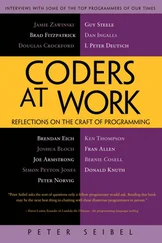Peter Siebel - Practical Common Lisp
Здесь есть возможность читать онлайн «Peter Siebel - Practical Common Lisp» весь текст электронной книги совершенно бесплатно (целиком полную версию без сокращений). В некоторых случаях можно слушать аудио, скачать через торрент в формате fb2 и присутствует краткое содержание. Год выпуска: 2005, ISBN: 2005, Издательство: Apress, Жанр: Программирование, на английском языке. Описание произведения, (предисловие) а так же отзывы посетителей доступны на портале библиотеки ЛибКат.
- Название:Practical Common Lisp
- Автор:
- Издательство:Apress
- Жанр:
- Год:2005
- ISBN:1-59059-239-5
- Рейтинг книги:4 / 5. Голосов: 1
-
Избранное:Добавить в избранное
- Отзывы:
-
Ваша оценка:
- 80
- 1
- 2
- 3
- 4
- 5
Practical Common Lisp: краткое содержание, описание и аннотация
Предлагаем к чтению аннотацию, описание, краткое содержание или предисловие (зависит от того, что написал сам автор книги «Practical Common Lisp»). Если вы не нашли необходимую информацию о книге — напишите в комментариях, мы постараемся отыскать её.
Practical Common Lisp — читать онлайн бесплатно полную книгу (весь текст) целиком
Ниже представлен текст книги, разбитый по страницам. Система сохранения места последней прочитанной страницы, позволяет с удобством читать онлайн бесплатно книгу «Practical Common Lisp», без необходимости каждый раз заново искать на чём Вы остановились. Поставьте закладку, и сможете в любой момент перейти на страницу, на которой закончили чтение.
Интервал:
Закладка:
(defun hello-world ()
(format t "Hello, world!"))
Next, recompile with C-c C-cand then type C-c C-zto switch to the REPL to try the new version.
CL-USER> (hello-world)
Hello, world!
NIL
You'll also probably want to save the file you've been working on; in the hello.lispbuffer, type C-x C-sto invoke the Emacs command save-buffer.
Now to try reloading this function from the source file, you'll need to quit Lisp and restart. To quit you can use a SLIME shortcut: at the REPL, type a comma. At the bottom of the Emacs window, you will be prompted for a command. Type quit(or sayoonara), and then hit Enter. This will quit Lisp and close all the buffers created by SLIME such as the REPL buffer. [21] SLIME shortcuts aren't part of Common Lisp—they're commands to SLIME.
Now restart SLIME by typing M-x slime.
Just for grins, you can try to invoke hello-world.
CL-USER> (hello-world)
At that point SLIME will pop up a new buffer that starts with something that looks like this:
attempt to call `HELLO-WORLD' which is an undefined function.
[Condition of type UNDEFINED-FUNCTION]
Restarts:
0: [TRY-AGAIN] Try calling HELLO-WORLD again.
1: [RETURN-VALUE] Return a value instead of calling HELLO-WORLD.
2: [USE-VALUE] Try calling a function other than HELLO-WORLD.
3: [STORE-VALUE] Setf the symbol-function of HELLO-WORLD and call it again.
4: [ABORT] Abort handling SLIME request.
5: [ABORT] Abort entirely from this process.
Backtrace:
0: (SWANK::DEBUG-IN-EMACS #)
1: ((FLET SWANK:SWANK-DEBUGGER-HOOK SWANK::DEBUG-IT))
2: (SWANK:SWANK-DEBUGGER-HOOK # #)
3: (ERROR #)
4: (EVAL (HELLO-WORLD))
5: (SWANK::EVAL-REGION "(hello-world)
" T)
Blammo! What happened? Well, you tried to invoke a function that doesn't exist. But despite the burst of output, Lisp is actually handling this situation gracefully. Unlike Java or Python, Common Lisp doesn't just bail—throwing an exception and unwinding the stack. And it definitely doesn't dump core just because you tried to invoke a missing function. Instead Lisp drops you into the debugger.
While you're in the debugger you still have full access to Lisp, so you can evaluate expressions to examine the state of our program and maybe even fix things. For now don't worry about that; just type qto exit the debugger and get back to the REPL. The debugger buffer will go away, and the REPL will show this:
CL-USER> (hello-world)
; Evaluation aborted
CL-USER>
There's obviously more that can be done from within the debugger than just abort—we'll see, for instance, in Chapter 19 how the debugger integrates with the error handling system. For now, however, the important thing to know is that you can always get out of it, and back to the REPL, by typing q.
Back at the REPL you can try again. Things blew up because Lisp didn't know the definition of hello-world. So you need to let Lisp know about the definition we saved in the file hello.lisp. You have several ways you could do this. You could switch back to the buffer containing the file (type C-x band then enter hello.lispwhen prompted) and recompile the definition as you did before with C-c C-c. Or you can load the whole file, which would be a more convenient approach if the file contained a bunch of definitions, using the LOADfunction at the REPL like this:
CL-USER> (load "hello.lisp")
; Loading /home/peter/my-lisp-programs/hello.lisp
T
The T means everything loaded correctly. [22] If for some reason the LOAD doesn't go cleanly, you'll get another error and drop back into the debugger. If this happens, the most likely reason is that Lisp can't find the file, probably because its idea of the current working directory isn't the same as where the file is located. In that case, you can quit the debugger by typing q and then use the SLIME shortcut cd to change Lisp's idea of the current directory—type a comma and then cd when prompted for a command and then the name of the directory where hello.lisp was saved.
Loading a file with LOADis essentially equivalent to typing each of the expressions in the file at the REPL in the order they appear in the file, so after the call to LOAD , hello-worldshould be defined:
CL-USER> (hello-world)
Hello, world!
NIL
Another way to load a file's worth of definitions is to compile the file first with COMPILE-FILE and then LOAD the resulting compiled file, called a FASL file , which is short for fast-load file . COMPILE-FILE returns the name of the FASL file, so we can compile and load from the REPL like this:
CL-USER> (load (compile-file "hello.lisp"))
;;; Compiling file hello.lisp
;;; Writing fasl file hello.fasl
;;; Fasl write complete
; Fast loading /home/peter/my-lisp-programs/hello.fasl
T
SLIME also provides support for loading and compiling files without using the REPL. When you're in a source code buffer, you can use C-c C-lto load the file with slime-load-file. Emacs will prompt for the name of a file to load with the name of the current file already filled in; you can just hit Enter. Or you can type C-c C-kto compile and load the file represented by the current buffer. In some Common Lisp implementations, compiling code this way will make it quite a bit faster; in others, it won't, typically because they always compile everything.
This should be enough to give you a flavor of how Lisp programming works. Of course I haven't covered all the tricks and techniques yet, but you've seen the essential elements—interacting with the REPL trying things out, loading and testing new code, tweaking and debugging. Serious Lisp hackers often keep a Lisp image running for days on end, adding, redefining, and testing bits of their program incrementally.
Also, even when the Lisp app is deployed, there's often still a way to get to a REPL. You'll see in Chapter 26 how you can use the REPL and SLIME to interact with the Lisp that's running a Web server at the same time as it's serving up Web pages. It's even possible to use SLIME to connect to a Lisp running on a different machine, allowing you—for instance—to debug a remote server just like a local one.
An even more impressive instance of remote debugging occurred on NASA's 1998 Deep Space 1 mission. A half year after the space craft launched, a bit of Lisp code was going to control the spacecraft for two days while conducting a sequence of experiments. Unfortunately, a subtle race condition in the code had escaped detection during ground testing and was already in space. When the bug manifested in the wild—100 million miles away from Earth—the team was able to diagnose and fix the running code, allowing the experiments to complete. [23] http://www.flownet.com/gat/jpl-lisp.html
One of the programmers described it as follows:
Интервал:
Закладка:
Похожие книги на «Practical Common Lisp»
Представляем Вашему вниманию похожие книги на «Practical Common Lisp» списком для выбора. Мы отобрали схожую по названию и смыслу литературу в надежде предоставить читателям больше вариантов отыскать новые, интересные, ещё непрочитанные произведения.
Обсуждение, отзывы о книге «Practical Common Lisp» и просто собственные мнения читателей. Оставьте ваши комментарии, напишите, что Вы думаете о произведении, его смысле или главных героях. Укажите что конкретно понравилось, а что нет, и почему Вы так считаете.








